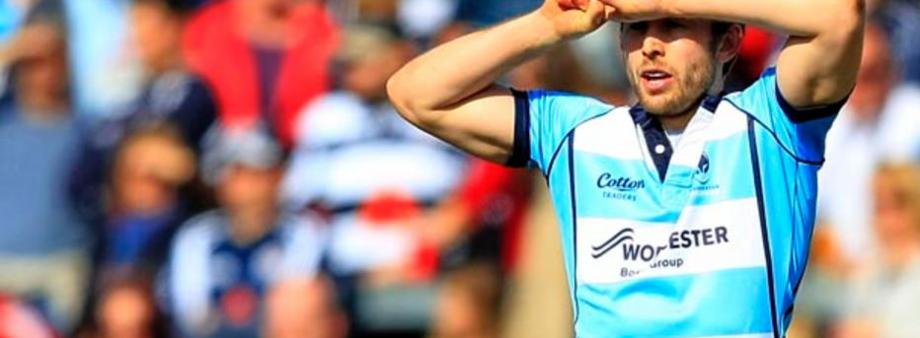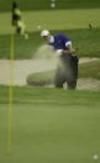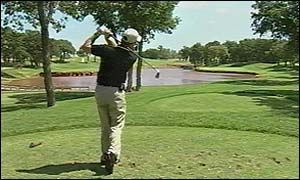
Golf
Golf
is a very popular sport, and is suitable for people with diabetes as it
is generally of low intensity, and you are able to carry food and
glucose monitoring equipment easily with you. The main physical effort
of the sport is traveling between the holes. To work out what is likely
to happen you need to work out the geography of the course, if is flat
or hill and how quickly will you go round. If you walk round a flattish
course at a slow rate, then the effect on blood glucose will be
negligible, but if you walk round a hilly course quickly, blood sugar
will fall significantly.
Morning Matches
Type 1 Diabetes.
Have your normal breakfast, but reduce your quick acting insulin by
about 25%. If you are on pre-fixed insulin, don’t change the amount,
but be prepared to take a snack with you. Check your glucose every 1-2
hours, if you see a fall in your glucose, take a 30g snack bar, and
remember on the next match, to reduce the pre golf insulin further.
T2 Diabetes.
Have your normal dose of metformin or rosigltazone/pioglitazone, but
halve your oral hypoglycemic agent (e.g. gliclazide). If you notice
that your glucose is falling, take an extra snack, and omit you oral
hypoglycemic agent on your next match.
Afternoon or Evening Matches
Type 1 Diabetes. Have
your normal lunch, but reduce your lunchtime quick acting insulin by
about 25%. If you are on pre-fixed insulin in the morning, don’t change
the amount, but be prepared to have extra food.
T2 Diabetes.
Have your normal dose of metformin or rosigltazone/pioglitazone,
and take your oral hypoglycemic agent (e.g. gliclazide). If you notice
that your glucose is falling, take an extra snack, and omit you oral
hypoglycemic agent on your next match.
Nightime hypos. If you pay golf infrequently, be prepare for night time hypoglycaemia. Reduce your bed time insulin dose by about 10-20%.
Golf With Type 1 Diabetes
By Scott Verpank
Scott
Verplank, diagnosed with diabetes as a child (type 1), started using a
Medtronic MiniMed insulin pump to control his diabetes three years ago.
He had had previously been on the basal bolus treatment. He says the
pump has meant he is no longer tied to the daily regime of injections,
and has allowed him to focus on his golf. Scott has risen from the
Professional Golfers Association's (PGA) Tour Qualifying School to 10th
on the 2001 PGA Tour money list in just five years. His success was
crowned by his selection as one of the 12 golfers in the US Ryder Cup
team by captain Curtis Strange.
Scott says: "The insulin pump has helped me achieve my goals and get closer to my dreams. It's made my life better. It's made my health better. It's helped me to become a better golfer because it has helped me to get my health better overall. I don't have peaks and valleys of my blood sugar levels that I had before, so I don't have peaks and valleys in my energy levels."
His pump, as with all others, is a small battery operated device delivers insulin from a reservoir inside the pump through a plastic tube under the skin. Insulin needs to be refilled and the disposable infusion sets changed every two to three days. It didn't help his team witn the Ryder Cup however!
Pumps are now available to UK patients after the National Institute for Clinical Excellence decision in 2003.
Scott says: "The insulin pump has helped me achieve my goals and get closer to my dreams. It's made my life better. It's made my health better. It's helped me to become a better golfer because it has helped me to get my health better overall. I don't have peaks and valleys of my blood sugar levels that I had before, so I don't have peaks and valleys in my energy levels."
His pump, as with all others, is a small battery operated device delivers insulin from a reservoir inside the pump through a plastic tube under the skin. Insulin needs to be refilled and the disposable infusion sets changed every two to three days. It didn't help his team witn the Ryder Cup however!
Pumps are now available to UK patients after the National Institute for Clinical Excellence decision in 2003.
The Diabetic Golfer
By Sandra Woodland
I am fast approaching my 50th birthday in March. I was diagnosed type 2 in early 1996 as I turned 40 years old – previously I had pregnancy diabetes in 1987, in the later stages.
I am fast approaching my 50th birthday in March. I was diagnosed type 2 in early 1996 as I turned 40 years old – previously I had pregnancy diabetes in 1987, in the later stages.
Late 2002 saw the change
for me from tablet control to four insulin injections per day. I had
just taken over as Lady Captain at my golf club. How to cope? It
was a big worry, but I got through my year with no problems.
In 2005, I played at least 92 rounds of golf, walking just over 4 miles per round. With Dr Gallen’s guidance, I do not take my breakfast insulin when I play in the morning, half the amount if I play in the afternoon. My 24 hour Glargine gives me a background amount of insulin. By cutting back on insulin when I am playing, I manage to get round by eating only a banana, perhaps a digestive biscuit. I always keep hypostop and glucose tablets in my golf bag but in 3 years have only taken the tablets once! Several other golfers have commented that other diabetics they have played with always consume lots of chocolate and drink Lucozade on the way. I reckon that is a definite way of gaining weight – which defeats the purpose of the exercise! I have even managed to play 2 x 18 holes in the same day on three occasions.
In 2005, I played at least 92 rounds of golf, walking just over 4 miles per round. With Dr Gallen’s guidance, I do not take my breakfast insulin when I play in the morning, half the amount if I play in the afternoon. My 24 hour Glargine gives me a background amount of insulin. By cutting back on insulin when I am playing, I manage to get round by eating only a banana, perhaps a digestive biscuit. I always keep hypostop and glucose tablets in my golf bag but in 3 years have only taken the tablets once! Several other golfers have commented that other diabetics they have played with always consume lots of chocolate and drink Lucozade on the way. I reckon that is a definite way of gaining weight – which defeats the purpose of the exercise! I have even managed to play 2 x 18 holes in the same day on three occasions.
I admit I am a bit of a control freak, usually
testing every day, but if it enables me to keep playing without worry,
then I’ll keep going! I never check my blood or take insulin on the
golf course and hope I’ll never have to do so!
If anyone is
interested, I am a member of a Diabetic Golf Society, who would welcome
more players. We meet 2/3 times per year. sandrawoodhead@hotmail.co.uk



